Treating Ear Infections in dogs and cats
EAR INFECTIONS IN DOGS AND CATS – part 2 -Treating Ear Infections
[ad name=”Tweet”]
For causes of ear infections in dogs and cats, please see our previous article, ‘Causes of ear infections in dogs and cats‘
Treating ear infections first of all involves diagnosing the cause of the ear infection and treating it. Many pet owners think that if their pet had an ear infection before and the drops they got from their vet worked the last time, if they buy more of the same drops the drops will cure it. But not all ear infections are the same, even if the discharge looks similar to a previous ear infection. Ear drops on the market can either contain a specific antifungal or antibacterial or, be a simple flushing drop with an altered pH (usual over the counter type ear drops), or have a combination of an antifungal, antibiotic and a cortisone (steroid) to treat allergies. They can get quite pricey so its worthwhile getting the ear infection properly diagnosed prior to putting any ear drops in.
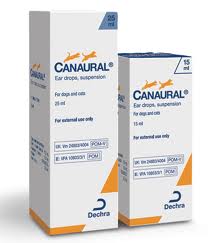
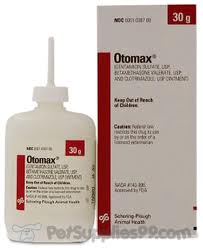
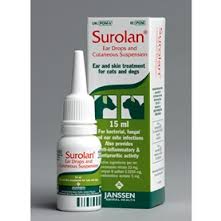

DIAGNOSING AN EAR INFECTION PROPERLY
If your pet has a very severe ear infection, recurring ear infections or an ear infection that just doesn’t clear up, it’s worth working it up properly at the vet. This involves dropping your pet off for the day at your vet on an empty tummy. Your pet will be given a light general anaesthetic and a tube placed down its throat. Your vet will then do the following:
- A proper ear exam with an instrument known as an otoscope – your vet will be able to see all the way down to the eardrum. Then he/she can tell if the eardrum is ruptured or not. Whether the eardrum is ruptured or not will determine how your vet can clean the ear, which ear drops would be safe to use down the ear, the long term prognosis for the health of the ear and the severity of the infection.
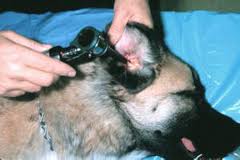
- Swabs should be taken from both ears and examined under the microscope to check if the basic ear infection is bacterial, fungal ear mite based or none of these – often allergic. Your vet should send swabs away to the laboratory at the same time so the lab can determine which antibiotics would be the best to use to fully clear the ear infection.

Swabs taken from the ear can be checked under the microscope for mites, yeasts and bacteria X rays of the head and ear canals will tell your vet if there are any polyps or growths in the ears which could be causing the infection as well as checking the health of the external ear canal, the middle ear and the inner ear which is inside the skull at the base of it. If your vet has access to MRI it can be done instead of x rays and is often better.
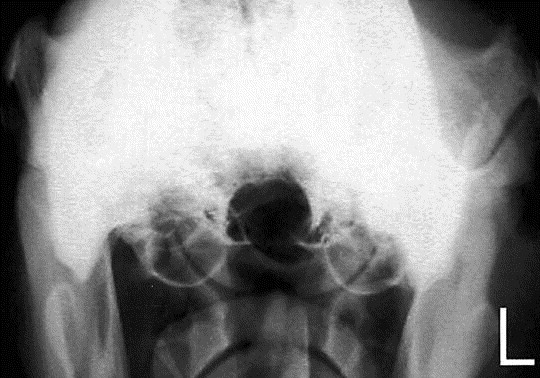
X ray of the air filled bullae at the base of the skull can show if the inner ear is healthy The ear should be thoroughly cleaned and flushed with either an ear cleanser or saline (if the eardrum is ruptured) Your vet may choose to instill and ear ointment at this time based on the swab or may decide to wait for the lab results to come back.
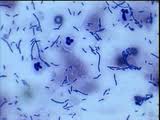
Bacterial ear infection – see the rod like bacteria all over the smear Once the lab results are back, your vet will give you a call and prescribe medication to treat the infection. Sometimes an ear may look horribly infected but no bacteria or yeasts are grown at all. In these cases there is a strong suspicion of allergy causing the problem. Allergies are also suspected as being the underlying cause of ear infections when a dog gets recurring ear infections despite all the proper steps being taken to choose the correct antibiotic/antifungal, the ear being properly cleaned out and no other underlying contributing factor (such as a growth blocking the ear canal or very thickened skin in the ear canals) is present.
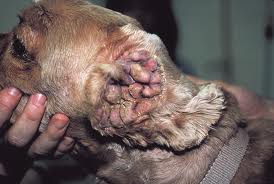
The skin is so thick here you cannot even find the opening to the ear canal In those cases your vet will recommend allergy testing. Allergy testing is done by either doing a blood test or a skin test where multiple areas of skin are pricked with different things that could cause allergies , and how much reaction occurs around the pricks is an indication of how allergic your pet is to things such as grass, moulds, dander, dust mites etc.
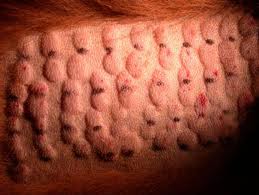
Skin prick allergy tests in a dog. This dog is reactive to many things and thus most likely allergic to many things The blood test involves taking a single sample, and sending it to a lab where they test the blood for reactions to common things that cause allergies. Dogs and cats can be allergic to many different things simultaneously.

A printed result of an allergy test done on a blood sample The most common things I have seen dogs and cats being are allergic to are:
- House dust mites
- Mould in the home
- Grasses and Pollens from trees and flowers
- The very yeasts and bacteria that are involved in the ear infections in the first place.
- Foods such as wheat, beef, chicken, rice, fish etc.
- Cotton and other fabrics
- Human dander and dander from other animals
 Your vet may also recommend a food trial before or after allergy testing. What this means is that your pet is put onto either what is known as a ‘novel protein diet ‘ or an ‘exclusion diet ‘ or a total hypoallergenic food. The first two diet use foods made of only a small number of ingredients, such as the fish and potato diets available on the market. Vets use these when for example , a dog is allergic to beef as shown by the allergy tests. These foods are also used if it is known that the animal is unlikely to have encountered a certain type of protein in its diet before, for example, ostrich. Then the food chosen will be ostrich and rice.
Your vet may also recommend a food trial before or after allergy testing. What this means is that your pet is put onto either what is known as a ‘novel protein diet ‘ or an ‘exclusion diet ‘ or a total hypoallergenic food. The first two diet use foods made of only a small number of ingredients, such as the fish and potato diets available on the market. Vets use these when for example , a dog is allergic to beef as shown by the allergy tests. These foods are also used if it is known that the animal is unlikely to have encountered a certain type of protein in its diet before, for example, ostrich. Then the food chosen will be ostrich and rice.
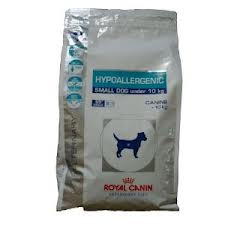
Hypoallergenic dog food should be fed alone with no other treats, tinned food or even a vitamin Hypoallergenic food is completely different and is actually made of what is known as hydrolyzed protein – this means protein that has been predigested into very short chains of protein or amino acids which are basic building blocks of protein. The reason for this is that an animal’s body can only develop allergies to large protein molecules and thus will be unable to be allergic to the food.

A common ear cleanser used to flush out dirt which helps prevent infections Medication to treat ear infections in dogs and cats involves the ear drops described above, ear washes, antibiotics injections and tablets, antifungal tablets , anti inflammatories and steroids (cortisone). These should all be prescribed by a vet once the specific disease has been diagnosed. In many cases the skin is so thickened and the infection so deep seated that a long course is prescribed. It is very important that owners do not stop the medication on their own if the pet ‘looks better’ as a resistant ear infection will come straight back again and be far more difficult to treat the second time around. Middle ear infections always need antibiotics and cannot be treated with ear drops.
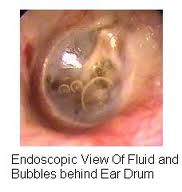
Fluids and gas behind the bulging eardrum in this middle ear infection -
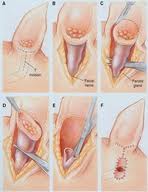
The skin of the ear canal is cut out completely with an ear canal ablation - Surgery of the ear is not performed nearly as often as it used to be as it has been found that diagnosing them and treating ear infections properly and promptly helps to prevent surgery. However it still has its place. Animals with irreversible ear disease – in other word where the skin is so thickened it will never be healthy, animals with ear infections so deep seated they have affected the bone around the ear and tumors in the ear are all example of ear infections that can be surgically treated. The most common type of surgery involves removing the skin on the inside of the ear canal either down to the eardrum or through the eardrum and all the way into the middle and inner ear. The latter is best performed by specialists.

Leave a Reply
You must be logged in to post a comment.